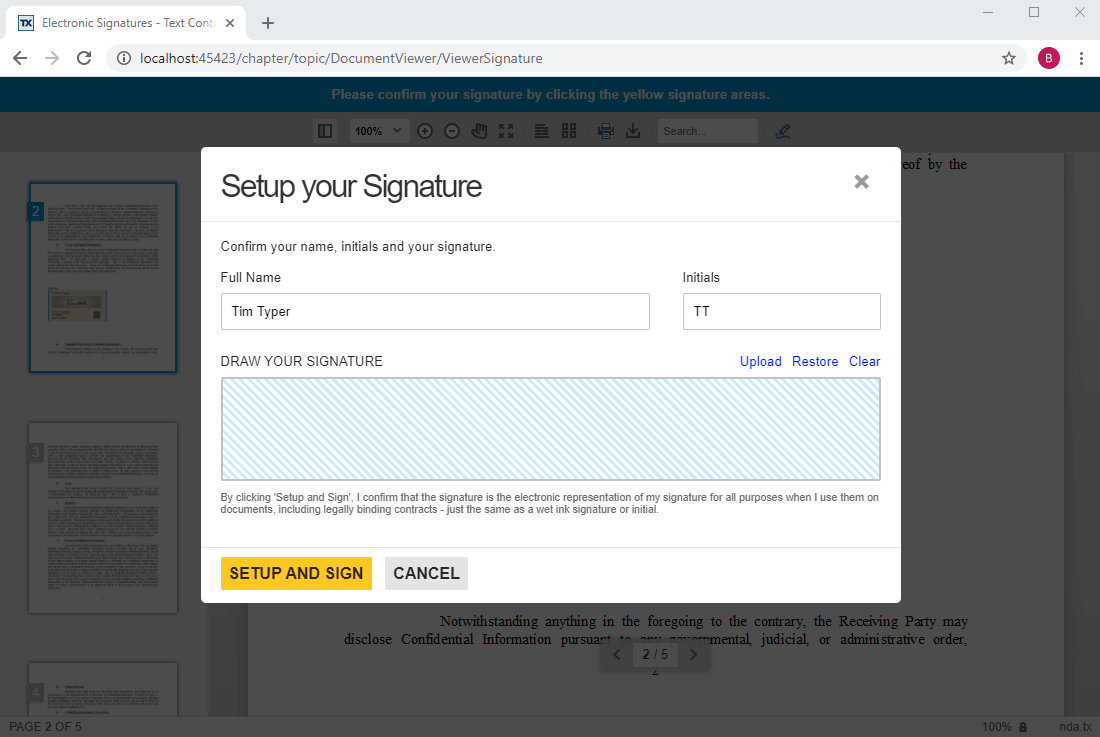What is an Electronic Signature?
Electronic signatures are widely recognized as legally binding in the world. But what is an electronic signature formally?
An electronic signature is a legal way to get consent on electronic documents. It replaces a wet lnk signature in any transaction.
The integration of digital document processing solutions including collaboration, document sharing and electronic signature processes help successful companies to serve their customers and support business continuity.
What are the Benefits?
Introducing electronic signature processes help in many areas including efficiency, saving costs and environmental aspects.
Legally Binding
Electronic signatures are legally binding and enforceable in most countries in the world.
Efficient
Improve transaction process efficiency and speed by offering electronic signatures.
Cost Effective
Reduce costs on paper, ink, postage and the manual processing of documents.
Environment
Safe trees and reduce paper consumption and vehicle emissions of cars carrying documents.
The advantages of signing documents electronically are obvious, but many businesses still remain reluctant to accept electronic signatures for many reasons including an uncertain legal situation. In the United States, most electronic signatures are just as valid and enforceable as a traditional wet ink signature.
The Legal Situation
The United States has legally recognized electronic signatures since 2000 with the ESIGN Act (Electronic Signatures in Global and National Commerce Act) and the UETA act (Uniform Electronic Transaction Act) in 1999. These acts ensure the validity of electronic signatures in the United States.
The law defines an electronic signature as follows:
...an electronic sound, symbol, or process, attached to or logically associated with a contract or other record and executed or adopted by a person with the intent to sign the record.
That implies that an electronic signature is valid as long as both parties agree to the particular method of completing the transaction. A consent from both parties is required with appropriate disclosures regarding the process of signing.
The law requires contracts that are signed electronically to be enforced and treated the same as any document signed manually. No contract can be voided because is was signed electronically which provides a safe legal environment to implement electronic signature processes.
Technical Implications
To qualify as an enforceable electronic signature, the signer's intent to execute the agreement must be recorded. Technically, this can be achieved by requiring signers to type their name or to draw their signature using the mouse or touchscreen.
A record of the electronic signature must be created at the time of execution and must contain the process by which the agreement has been accepted by the signer. In other words, the drawn signature must be included as a visual stamp in the document. These documents can be exchanged by e-mail which qualifies as a record of the transaction. But typically, an audit report is implemented to satisfy the record requirement.
Basic Principles
3 basic principles must be implemented to be meet most electronic signature requirements:
1. Authentication
The signer must be identified before the electronic signature can be processed.
2. Intent and Consent
The signer must show intent and consent to use the provided electronic signature method.
3. Record Proof
An audit trail with clear evidence of each transaction must be provided.
From a legal point of view, only the second ("Intent and Consent") must be implemented to fulfil the legal requirements for an electronic signature. But by implementing the other 2 ("Authentication" and "Record Proof"), the implemented process is valid in most countries around the world.
-
Authentication
The signers identity must be proved by one of the following options:-
E-mail signature request: A unique link to the document is emailed to the signers' e-mail address which identifies the user.
-
Second factor authentication: Prompt the user to verify the identity by using a password, a phone PIN or any other method of authentication.
-
Digital signatures: The signed document can be encrypted and digitally signed using a personal certificate such as a digital ID issued by TSPs (Trust Service Providers).
-
-
Intent and Consent
It must be proved that the signer intended to sign and consented to perform the transaction electronically.-
Draw the signature: Signers draw or add a signature or click to accept an agreement.
-
-
Record Proof
An audit trail must show which document was signed when and who signed it. This can be done by implementing one or more of the following options:-
Send executed documents by e-mail: The signed documents with the signatures are sent automatically to all parties.
-
Store documents: The signed documents are securely stored in a repository and should be accessible by (and only) all parties.
-
Why Text Control?
All of the above legal requirements to implement a fully legally binding and enforceable electronic signature solution are fulfilled by TX Text Control. TX Text Control provides an all-in-one document automation library with advanced workflow capabilities and at the same time an easy to use interface. Use a complete set of tools to add electronic, legally binding signatures to documents including Adobe PDF and to digitally sign those documents with certificates.

The major advantage of TX Text Control is the flexibility of the integration and the option to customize the complete electronic signature workflow. The process is part of your application and documents are not shared with third-party entities.
Test this on your own and visit our live demos:
Whether you need some detailed information about how Text Control can help you integrating electronic signatures into your workflows or you would like a customized quote for your business needs, we are here to help you get your questions answered.

